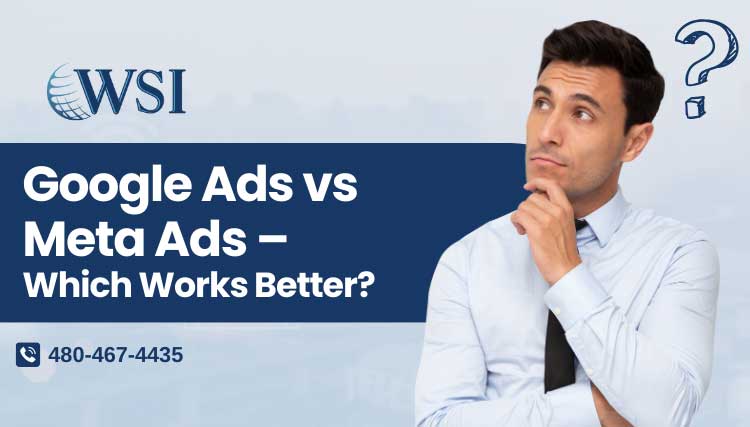
Every business with eyes on growth faces a crucial decision: where to invest its pay-per-click budget. Should you lean into Google Ads marketing to capture high-intent search traffic, or turn to Meta Ads to build awareness and engagement? The answer isn’t always clear. Each platform brings strengths and limitations. Understanding how they differ can turn a scattershot campaign into a strategic asset. Let’s explore the PPC trends, the real challenges and practical ways forward.
Google Ads tend to run higher cost per click but deliver users already searching for your solution. Facebook (Meta) Ads, by contrast, typically cost less to reach people, but those users may not be ready to convert yet. For example, in 2025 average CPC on Facebook hovered around $1.72, while Google Ads ran about $5.26.
Google often leads to strong conversion rates thanks to search intent, but Meta excels at brand awareness. Benchmarks show Meta Ads deliver CPCs of $0.50–$2.00 and impressive return on ad spend, around 6:1 for some eCommerce brands. Meanwhile, Google Ads CPCs generally fall between $1.50 and $3.00, and average ROAS hovers near 4:1.
Google search costs are rising. By early 2025, data showed average Google search CPC at about $5.26, conversion rate averaging 7.5%, and cost per lead around $70 across industries. At the same time, Meta’s pricing is more predictable but competitive, especially during high-demand seasons.
Both platforms are leaning heavily into AI-driven campaign tools like Google’s Performance Max and Meta’s Advantage+. These simplify automation but reduce control and transparency. Advertisers often worry about where their ads run and who sees them.
Begin by deciding if your priority is bottom-funnel conversions or brand reach. If you want quick leads or sales from users already searching for solutions, Google Ads often perform better. But if you’re just getting your name out there or building interest among new audiences, Meta can be more cost-effective.
Given these differences, a split-test is smart. Start by allocating an equal budget across both platforms. Track metrics like CPC, conversion rate, CPA (cost per acquisition), and ROAS. Use benchmarks to guide interpretation:
Based on these results, allocate 70% of your budget to the platform that delivers higher ROAS, and reserve 30% for exploring and discovering new ideas.
If you choose Google, paying attention to Quality Score can lower costs. By improving click-through rate, ad relevance, and landing-page experience, advertisers have achieved CPC discounts up to 50%.
AI tools save time, but they often feel like black boxes. Set clear goals, use exclusions (e.g., block irrelevant sites or audiences), and track performance. This helps keep control while still benefiting from automation.
For Google: monitor CTR, Quality Score, conversion rate, and CPL. Adjust bids, refine keywords, and test landing pages
For Meta: focus on engagement rate, ad relevance, cost per lead, and purchase conversion rate. Refine audiences, ad creative, and placements.
If your goal is direct conversions, Google Ads typically deliver high-intent traffic and stronger conversion rates, though at higher CPCs. Track your CPL and ROAS against benchmarks. If your priority is cost-effective awareness and retargeting, Meta Ads often deliver lower CPCs and excellent ROAS, especially for eCommerce and brand storytelling.
For many advertisers, a hybrid approach works best. Use Meta for broad reach and engagement, then retarget warm audiences with high-intent Google search ads. Allocate budgets based on performance data and continuously optimize for cost efficiency and return.
Giving equal footing to both Google Ads and Meta Ads in your PPC campaign allows you to discover which platform drives meaningful results for your business. Analyze real metrics like CPC, conversion rate, cost per lead, and ROAS, and adjust budget allocations accordingly.
Ready to sharpen your PPC strategy? Begin by benchmarking both platforms, testing campaigns with clear KPIs, then scale with data-backed confidence. For effective PPC campaign management, contact WSI- Optimized Web Solutions today!
Here are some other blog posts you may be interested in.
Artificial intelligence has changed the way search engines interpret and deliver information. AI-driven results are...
In the world of digital platforms, timing can make the difference between a post that...
Introduction Modern marketing demands speed, creativity, and efficiency. Many professionals feel pressure to deliver more...